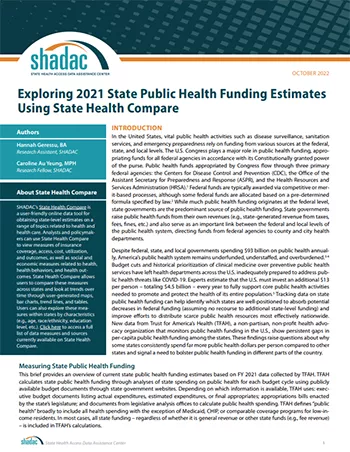This updated SHADAC brief on state-provided public health funding estimates highlights newly-available 2021 data as well as trends over the past decade (2012–2021). These estimates come from SHADAC’s State Health Compare measure, “Public Health Funding”, which provides annual estimates of per-capita state public health funding starting in 2005 (with the exception of data year 2006, for which no estimates are available).
State governments are the predominant source of public health funding in the United States, raising public health funds from their own revenues (e.g., state-generated revenue from taxes, fees, fines) and also serving as an important link between the federal and local levels of the U.S. public health system by directing funds from federal agencies to county and city health departments. Tracking data on state public health funding can help identify which states are well-positioned to absorb potential decreases in federal funding (assuming no recourse to additional state-level funding) and improve efforts to distribute scarce public health resources most effectively nationwide. Persistent gaps in public health funding among the states raise questions about why some states consistently spend far more public health dollars per person compared to other states and signal a need to bolster public health funding in different parts of the country.
Linked below are previous versions of this brief:
Assessing State Public health funding (data years 2011–2020) - Published June 2021
Exploring Public Health Indicators with State Health Compare: Public Health Funding (data years 2015-2019) - Published May 2020

